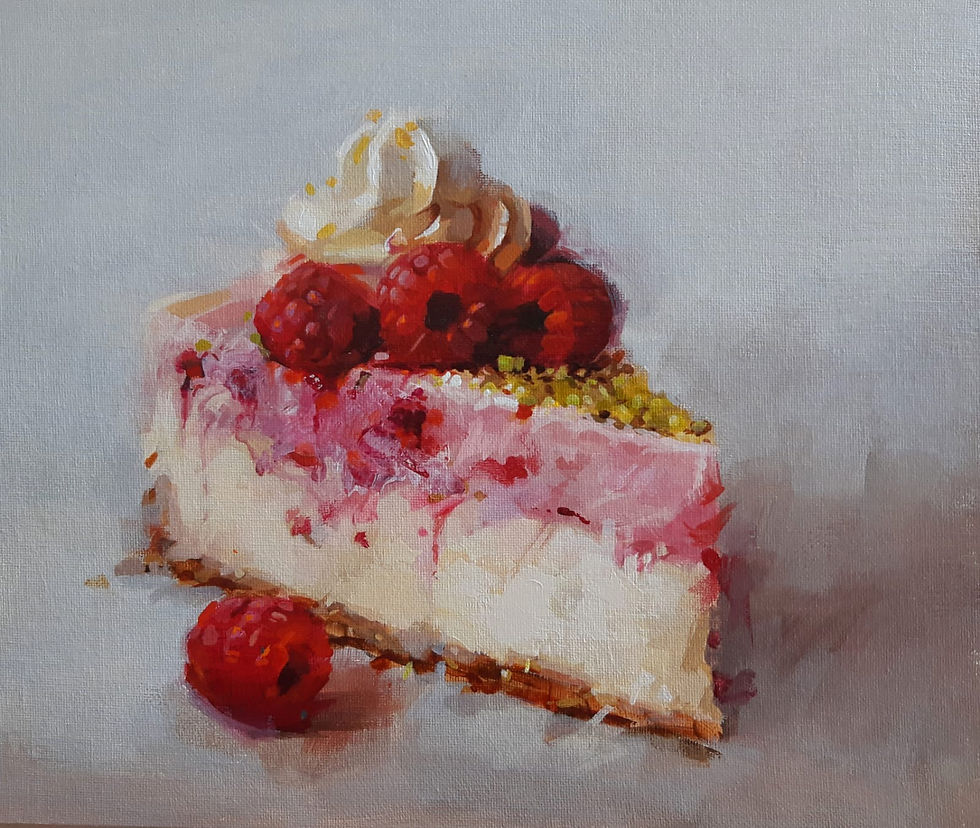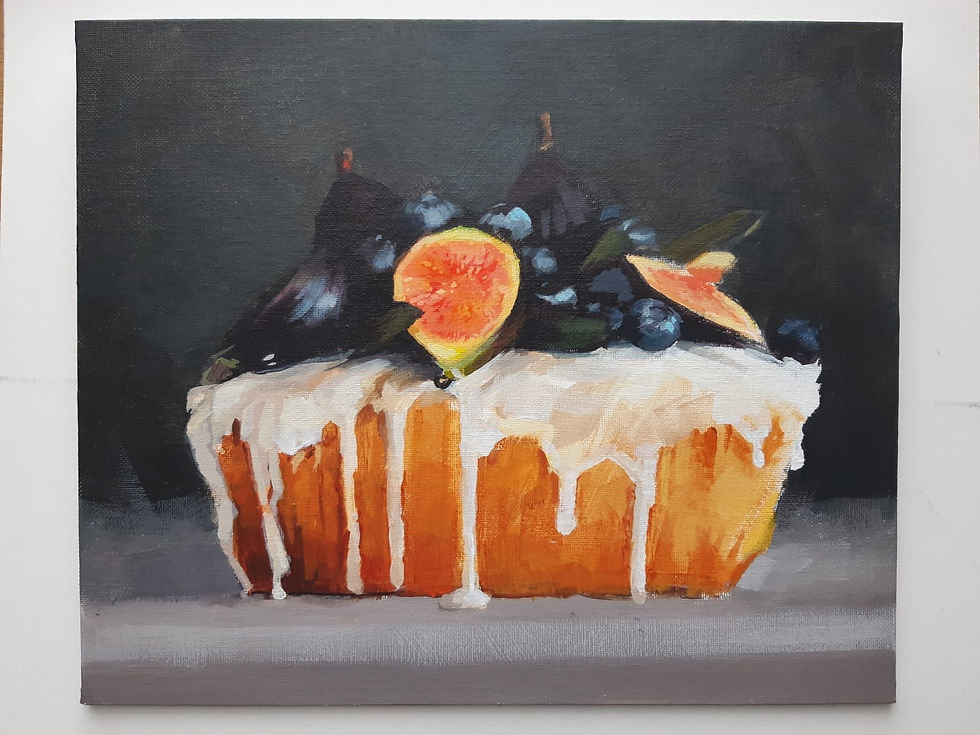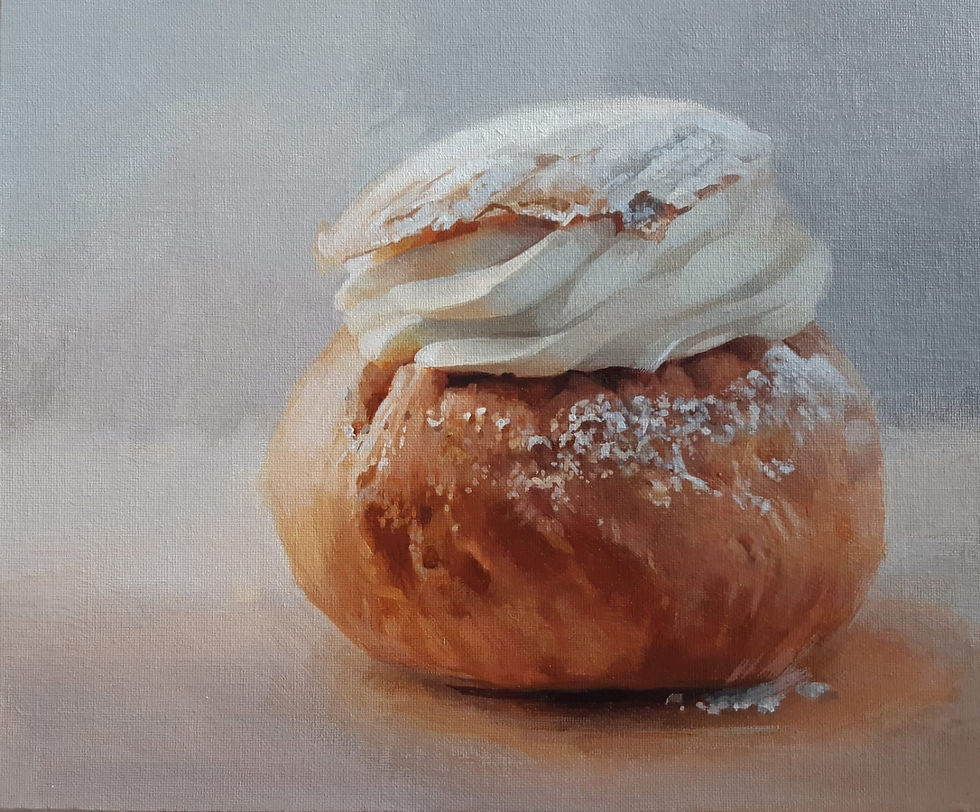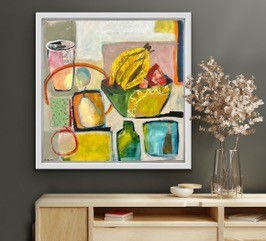Feast your eyes: food art indulges the senses
- chriswoodcock32
- Aug 16
- 3 min read

Bananas, ice cream, cheesecake and fish and chips… There’s a mini mountain of food is in the Gallery this summer - but it’s all calorie-free as none of it is edible.
Our summer theme of Indulgence has generated a range of food-inspired art by a selection of our regional artists. Some of them have produced newly-conceived pieces specially to reflect the indulgent lifestyle theme and others have created work based on their favourite ideas, media and motifs.
It’s got us thinking about the roots of food art in art history – much of it resonating with symbolism – and about the fine tradition in 20th century food art, not least from the Pop Art movement of the 1960s.
Of course, not all early food and drink still life art was symbolic or based on Christian narratives, like the Eden apple and the breaking of bread and drinking of wine. In the 16th to 18th centuries, more expensive delicacies – such as shellfish, lemons and game – were painted to express the wealth and privileged lifestyle of the patron. It was intended as decorative, status art to put in their equally status-conscious homes.
Leap forward to the 20th century and Pop Artists explored the crossover between art and commercialisation to hold up a mirror to contemporary life and consumerism. Through representations of unglamorous food and food packaging, they made tangible and valuable what had previously only been considered mundane and mass-produced.
As the supermarket had become a staple of western urban life and a symbol of modern America, it also became central to the movement. Their art often depicted everyday food items using traditional artistic methods, blurring the boundary between “high” and “low” culture and confronting us, once again, with the perennial question of 'what makes art?'.
An obvious example is Andy Warhol’s Campbell’s soup can paintings. This had nothing to do with displaying wealth: Pop Artists chose to depict mass-produced products to challenge the elitist and self-obsessed art world.
Contemporary still life paintings focused on food often reimagine traditional still life subjects and techniques, incorporating modern perspectives and aesthetics. Artists like Daniel Gordon, Anna Valdez and Arden Surdam push the boundaries of the genre: they feature everyday objects, explore themes of consumption, greed and waste or incorporate unexpected materials and styles.
Other food artists push boundaries in different ways – Amelia Harnas creates art with wine stains, while Dan Cretu combines food and photography.

And, today, still life continues to celebrate food. In our Indulgence exhibition, one of our two Featured Artists, Carole Condė, depicts bakery and patisserie food items in a soft and painterly way, reflecting centuries of still life realism yet also elevating modern everyday treats by beautifully lighting a slice of raspberry cheesecake, capturing the texture of a swirl of cream and treating a morsel of cake with reverential respect.

Meanwhile, Sara Huxley uses semi-abstract mixed media and lots of pattern and colour to celebrate meal times and humble dishes like fish and chips (everyone’s naughty-but-nice seaside treat) or bowls of fruit and vegetable dishes.

Food art encompasses such a wide range of artistic expressions, whether using food as the medium or subject. Judging by its buoyant sales here this summer, it’s not going out of fashion any time soon and is often the perfect choice for a kitchen or dining interior scheme.





Comments